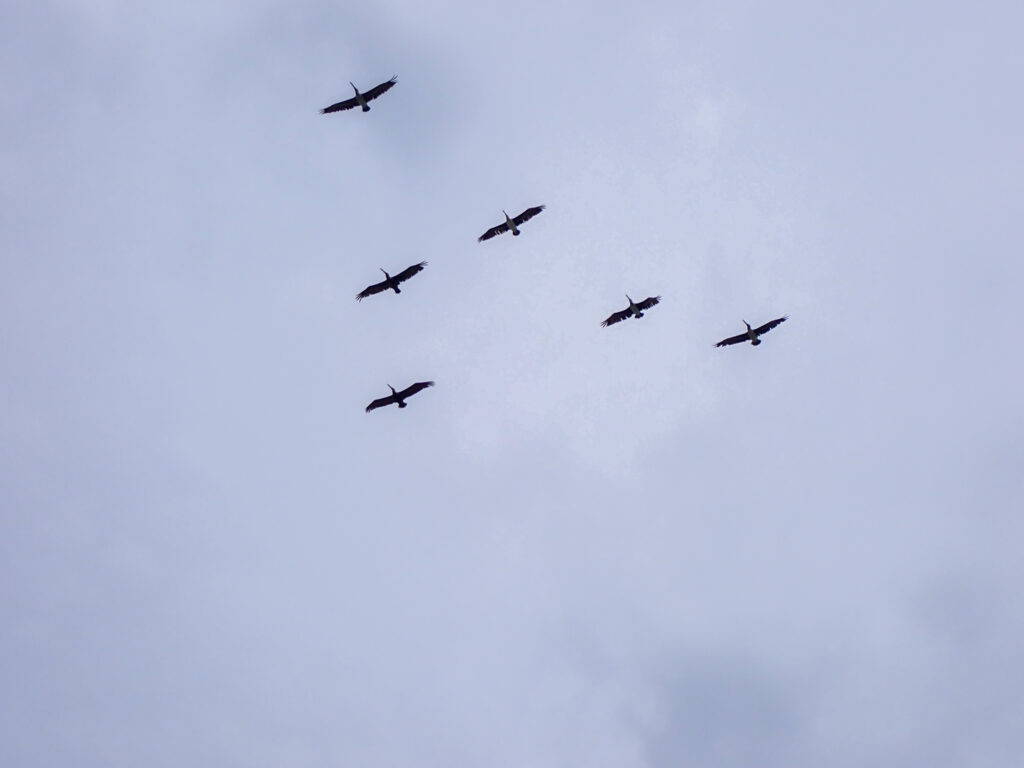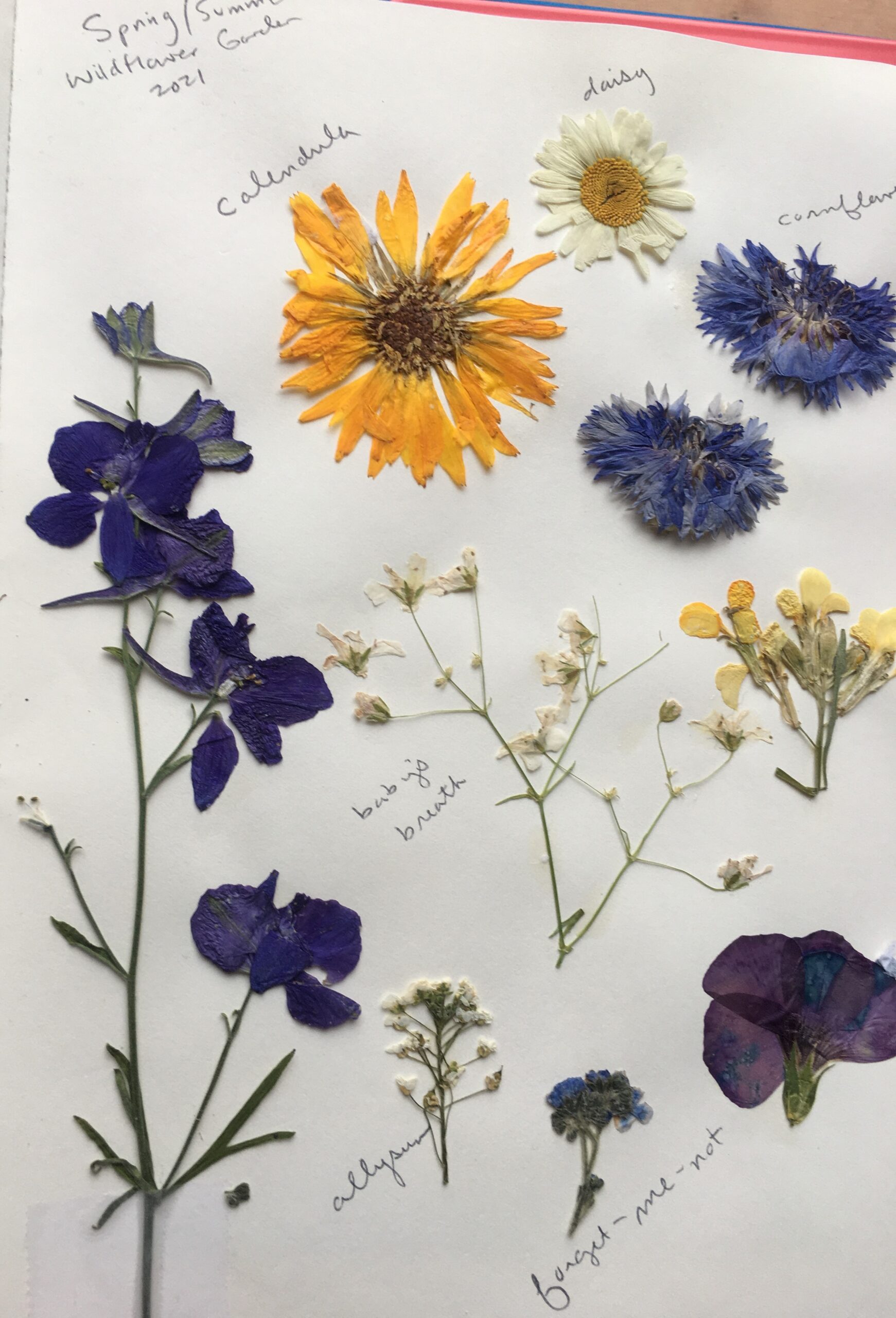Caring a Hair for the Birds of the Air
Since I began homeschooling my children last year, I’ve felt compelled to raise them as amateur naturalists.
We take walks together as a family. I casually acknowledge the lifeforms we pass if I happen to know their names, trying not to intrude too much on our experience by making it sound like a lesson.

“Hello sycamore, look how enormous you are!”
“Wow, so much jewelweed growing along the creekbank.”
“Hmm, check out these nibbled acorns. I wonder if we’ll see some chipmunks nearby?”
“Daisies have arrived on George’s driveway,” I pencil in my nature journal alongside a rudimentary sketch of the cheerful flower. If I bring my journal on hikes or pour over a specimen after we’ve returned home, the children are far more inspired to follow suit than if I simply tell them to do it themselves.

Knowing the names and habits of plants and animals creates opportunities for us to grow closer to understanding and respecting them, recognizing their gifts and our responsibility for them and beginning to understand our own place among our plant and animal kin as interdependent, invaluable cohabitants of our beautiful home — Earth.

I’ve been surprised to find that as I don my parenting cap and also my homeschool marm headdress, science is fast becoming a favorite subject both for sharing with my children and for engaging with on my own lifelong learning journey.
This may recede as my children grow older, but for now, so much of studying science is just being with the natural world and coming to know it, observing, experimenting and experiencing it, recording our findings through drawing and telling stories or taking photographs.

I’ve been surprised too in discovering how much homeschooling nourishes my spirit during what has been an otherwise spiritually-dry time in my life. I’m a little disinterested and disengaged from religion right now: a strange space to inhabit for someone whose life has been so shaped and enriched by Christian faith and its traditions, studies and communities.
I’ve long had a tendency to experience draughty waves of doubt but have been able to maintain continuity in my faith practices through community. Then Covid-19 came along. While it was a bit of a struggle to be centered and prayerful during in-person Mass with our three boisterous kids in tow, livestreaming quickly proved far more challenging.
For reasons yet unknown, any time we began to stream morning Mass, fights would mysteriously erupt between siblings or they were suddenly inspired with ideas for wild games in which someone was inevitably injured. We tried to calm them by turning on a nature program, only to find that the constant threat of predators kept them crying out “Skip this part!”
We eventually skipped both the nature show and Mass and found other ways to honor the Sabbath as a family. I tried to incorporate Scripture and prayer into our daily rhythms so it might feel more natural and less like a once-a-week intrusion. Yet I found my attempts to convey Christian teaching while immersed in personal ambivalence was anything but natural.
In the meantime, my fumbling efforts to learn to teach my kids at home have led me to the writings of the innovative educator Dr. Maria Montessori. I’ve fallen in love with her over-arching philosophy of Cosmic Education within which every lesson for the elementary child is tucked.
“Can being humbled by stars and grateful for trees, rejoicing with seeds that break through soil and bees that build hexagonal hives direct us toward the Divine?”
In her book “To Educate the Human Potential” she writes, “let us give [the child] a vision of the whole universe … The stars, earth, stones, life of all kinds … we cannot understand a stone without some understanding of the great sun! No matter what we touch, an atom, or a cell, we cannot explain it without knowledge of the wide universe.”
Beginning with the entirety of the universe and spiraling gently but grandly down through planets and plants, we eventually find our way to humanity and history and language and math and everything intertwined and interdependent. We displace humanity from the center and recognize ourselves as part of an integrated and interactive whole in which, though bearing much power (and thus responsibility), we are among the most dependent of species.
It is a style of teaching that requires intensive, intentional preparation of the adult. I’m floundering and floating all at once, scrambling to teach as I learn, hoping the wonder that fills me as I absorb the great lessons of our world will overflow to the littles looking up to me.
You may be asking yourself, as I did when I first began organizing my thoughts for this blog, “What does this have to do with messy Jesus business?
Anyone with kids knows well that parenting, let alone homeschooling, is a messy-enough business any way you look at it. But where’s the Jesus part in all of this? I occasionally find myself wondering if Jesus is too absent from my children’s learning let alone from this reflection.
Surely a desire to revere and care for the living world is at least a respectful nod to it’s Creator. Can being humbled by stars and grateful for trees, rejoicing with seeds that break through soil and bees that build hexagonal hives direct us toward the Divine? Indubitably! But there’s more.
It occurred to me, isn’t cosmic education and nature study how Jesus taught? How often were his lessons given on craggy mountains, in grassy fields, in dry deserts or on rocking boats? How often were they of trees and seeds and seasons?
“The kingdom of heaven is like a mustard seed that someone took and sowed in his field; it is the smallest of all the seeds, but when it has grown it is the greatest of shrubs and becomes a tree, so that the birds of the air come and make nests in its branches.” (Matthew 13:31-32)

“Consider the lilies and wildflowers,” he said, “how they grow … They neither labor nor spin; yet I tell you, not even Solomon in all his glory and splendor dressed himself like one of these.” (Luke 12:27)
When we choose to spend our mornings learning birdsong rather than hymns or examining a flower rather than a verse, we are not just studying science and art and we are not neglecting the teachings of Jesus. Not at all. We are observing the birds of the air. We are considering the lily.

Amy Nee-Walker grew up in the middle of a large and lovely family in Central Florida. Living into questions about truth and love has led her to the Catholic Worker Movement, the Catholic Church, her incredible husband, three audacious, adorable children, and (for the time being) a home in the hills of Appalachia.






